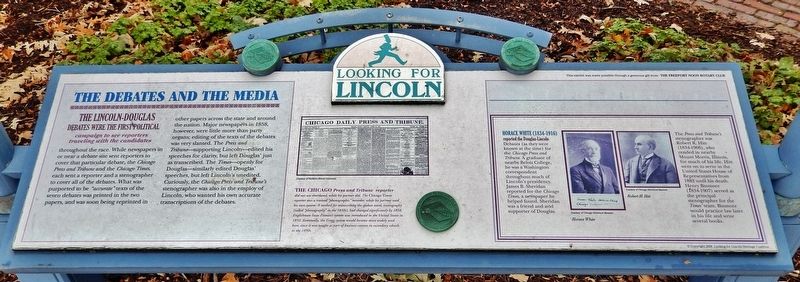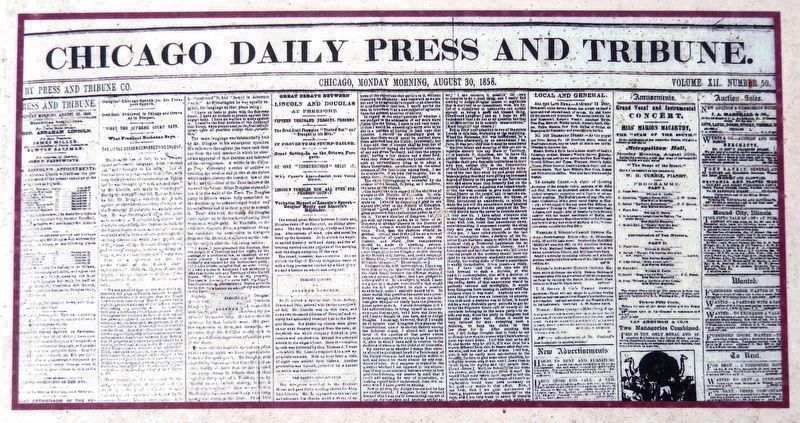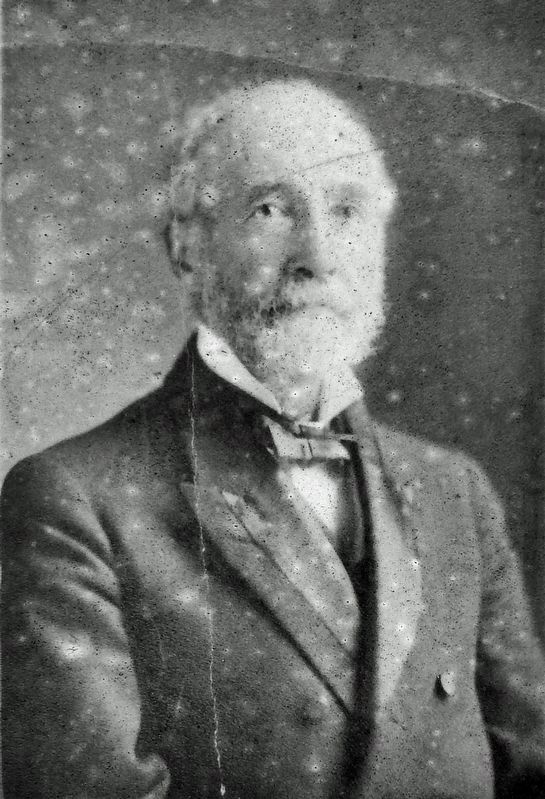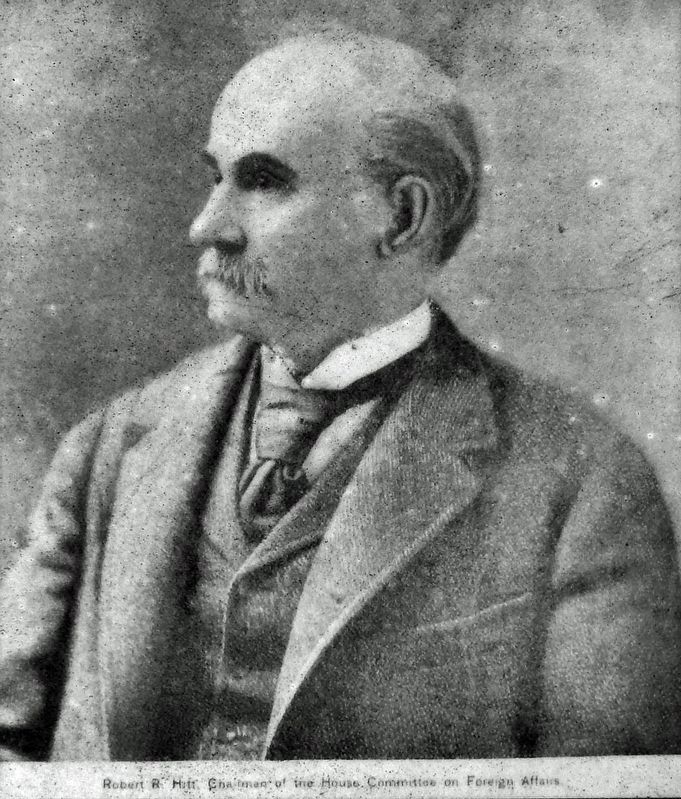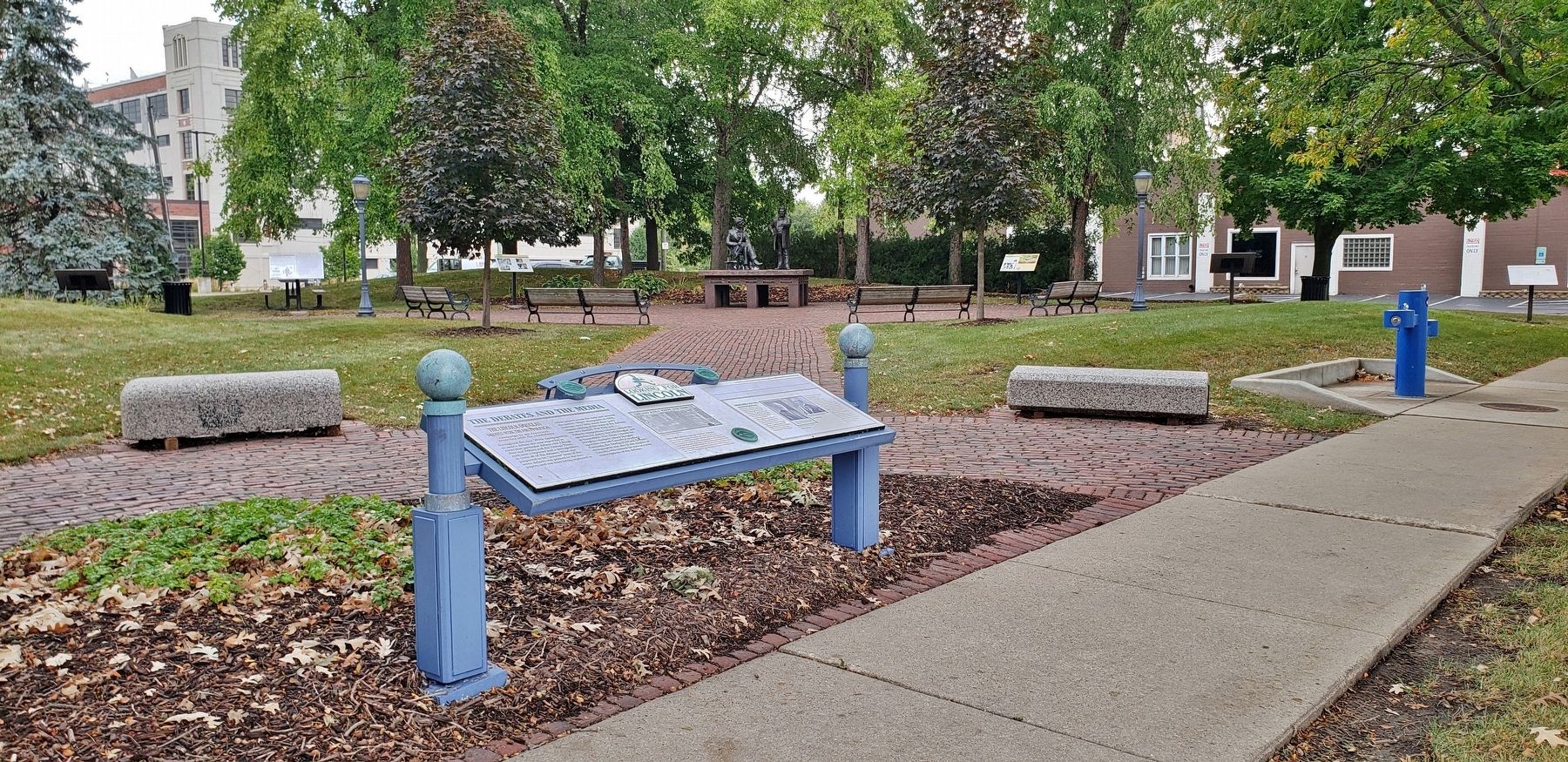Freeport Township in Stephenson County, Illinois — The American Midwest (Great Lakes)
The Debates and the Media
Looking for Lincoln
debates were the first political
campaign to see reporters
traveling with the candidates
THE CHICAGO Press and Tribune reporter did not use shorthand, while his partner did. The Chicago Times reporter was a trained "phonographic" recorder; while his partner used his own system. A method for transcribing the spoken word, stenography (called "phonography" in the 1850s), had changed significantly by 1858. Englishman Isaac Pitman's system was introduced in the United States in 1852. Eventually, the Gregg system would become more widely used here, since it was taught as part of business courses in secondary schools in the 1890s.
Horace White (1834-1916)
reported the Douglas-Lincoln Debates (as they were known at the time) for the Chicago Press and Tribune. A graduate of nearby Beloit College, he was a Washington correspondent throughout much of Lincoln's presidency. James B. Sheridan reported for the Chicago Times, a newspaper he helped found. Sheridan was a friend and avid supporter of Douglas.
The Press and Tribune's stenographer was Robert R. Hitt (1834-1906), who resided in nearby Mount Morris, Illinois, for much of his life. Hitt went on to serve in the United States House of Representatives from 1882 until his death. Henry Binmore (1834-1907) served as the principal stenographer for the Times' team. Binmore would practice law later in his life and write several books.
Erected by Looking for Lincoln Heritage Coalition; and the Freeport Noon Rotary Club.
Topics and series. This historical marker is listed in these topic lists: Communications
• Government & Politics. In addition, it is included in the Former U.S. Presidents: #16 Abraham Lincoln, and the Looking for Lincoln series lists. A significant historical year for this entry is 1858.
Location. 42° 18.023′ N, 89° 37.182′ W. Marker is in Freeport, Illinois, in Stephenson County. It is in Freeport Township. Marker is at the intersection of East Douglas Street (Illinois Route 75) and North State Avenue, on the left when traveling east on East Douglas Street. Marker is located along the walkway in Lincoln-Douglas Debate Square. Touch for map. Marker is at or near this postal address: 114 East Douglas Street, Freeport IL 61032, United States of America. Touch for directions.
Other nearby markers. At least 8 other markers are within walking distance of this marker. Welcome to Debate Square (a few steps from this marker); Douglas Re-elected (within shouting distance of this marker); Richard F. Sokup (within shouting distance of this marker); Robert J. Schmelzle (within shouting distance of this marker); Boulder Dedication (within shouting distance of this marker); The Legacy Remains (within shouting distance of this marker); Freeport Commemorates (within shouting distance of this marker); Second Lincoln-Douglas Debate Monument (within shouting distance of this marker). Touch for a list and map of all markers in Freeport.
Related markers. Click here for a list of markers that are related to this marker. 2nd Lincoln-Douglas Debate • Freeport, Illinois
Also see . . .
1. Lincoln-Douglas Freeport Debate. Excerpt:
Stephen A. Douglas, the incumbent senator, and Abraham Lincoln, a former congressman and current attorney, met for the second in a series of seven debates for the right to represent Illinois in the Senate. They debated the issues of the day before an outdoor crowd in Freeport, Illinois. Mr.Douglas and Mr. Lincoln again traded accusations, Mr. Douglas accusing Lincoln of being an abolitionist and Mr. Lincoln accusing Douglas of being for the nationalization of slavery. They also accused each other of not frankly answering the other’s questions.(Submitted on September 22, 2023, by Cosmos Mariner of Cape Canaveral, Florida.)
2. The Journalists: Horace White (1834-1916). Excerpt:
Horace White was a young journalist destined for major newspaper positions in Chicago and New York when he met Mr. Lincoln during the 1854 legislative campaigns in Illinois.(Submitted on September 22, 2023, by Cosmos Mariner of Cape Canaveral, Florida.)
3. Lincoln–Douglas Debates (Wikipedia). Excerpt:
Never in American history had there been newspaper coverage of such intensity. The state's largest newspapers, from Chicago, sent phonographers (stenographers) to report complete texts of each debate; thanks to the new railroads, the debates were not hard to reach from Chicago. Halfway through each debate, runners were handed the stenographers' notes. They raced for the next train to Chicago, handing them to riding stenographers who during the journey converted the shorthand back into words, producing a transcript ready for the Chicago typesetter and for the telegrapher, who sent it to the rest of the country (east of the Rockies) as soon as it arrived. The next train brought the conclusion.(Submitted on September 24, 2023, by Cosmos Mariner of Cape Canaveral, Florida.)
Credits. This page was last revised on September 27, 2023. It was originally submitted on September 22, 2023, by Cosmos Mariner of Cape Canaveral, Florida. This page has been viewed 85 times since then and 10 times this year. Photos: 1, 2, 3, 4, 5. submitted on September 22, 2023, by Cosmos Mariner of Cape Canaveral, Florida.
